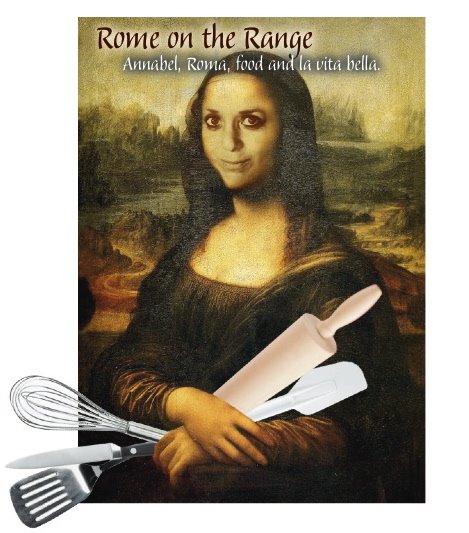
Okay, this may not be completely accurate, but here goes. According to Lisa, my guide on all things Roman, the Jewish community in Rome is the oldest continuous one in all of Europe, since around 300 BCE. I learned subsequently that the history goes back to the days of the Maccabees.
In Rome, it was only when Christianity was adopted officially, was there open discrimination. Walls were built to contain the Jews in the mid 1500s and its residents required to wear "flair" (yellow on hats and scarves) to be easily identifiable. For more than 300 years, Jews were forced to live exclusively in this "quarter." In the late 1800s, the walls were torn down, but there is still a strong presence and Jewish feel to the area, with its synagogue (the main synagogue in Rome) museum and myriad of Kosher restaurants.
The Jewish quarter, about a 15 minute walk from my apartment, is bordered on one side by the Tiber, near the Isola Tiberina, Tiber Island.
We had dinner near the famous Fontana de la Tartarughe, the Tortoise Fountain, in the northern area of the quarter. We stopped at one eatery Lisa likes, Nonna Betta (Grandmother Betta) in the heart of the area, Via del Portico d'Ottavia. The area caters to Jewish (and non-Jewish) travelers and those who keep kosher in Rome. Some of the men in Nonna Betta wore yamulkas.
We experienced an evening of artichokes and more. We ordered Carciofo all Guidia (fried artichokes in the Jewish style), zucchini flowers stuffed with Mozzarella and anchovies (fresh anchovies, not the salty canned anchovies of America). The artichokes are so uniquely Roman I just had to add the recipe. We had Stracetto di Tonno and a uniquely Roman vegetable salad, Puntarelli (wild chicory or endive stems) with anchovy dressing. Delish!
Carciofo All Guidia (Jewish Style Artichokes)
NOTE: If you've never seen these, then it's hard to picture, but imagine friend whole artichokes or the bottom third of artichokes, deep fried in olive oil. We've seen these whole or served as just the heart and bottom leaves. For ease, I am including a recipe with the hearts and the lower leaves.
8 whole artichokes
Juice of two lemons
salt and pepper to taste
Olive oil for frying (start with 2 1/2 cups)
Cut the tops of the artichokes off to just above the heart (start slowly, you can always cut more).
Fill a bowl with water and lemon juice (enough to submerge the artichokes). Use scissors or a sharp knife to cut off the tough tips of the artichokes.
Cut off around the hairy "choke" and discard the spikey/hairy part. You WILL l want to keep the lowers leaves (they are essential to this recipe). Cut the stalk so that it is quite short (so the artichoke will sit flatter on its bottom).
Line a baking sheet with several layers of paper towel. Set aside.
Heat oil in a large skillet over high heat until very hot. Season the artichokes with salt and fresh ground pepper and drop them into the skillet. Cook them, turning once or twice, until the artichoke becomes a darker, browned color and are tender. Drain well on the prepared baking sheet and serve hot or at room temperature. Makes 4 servings.


I've seen versions where the 'choke is smashed down on a flat surface, to spread out the leaves, and another in which the artichokes, along with a long section of peeled stem left on, are sliced lengthwise to make them easier to fry.
ReplyDelete